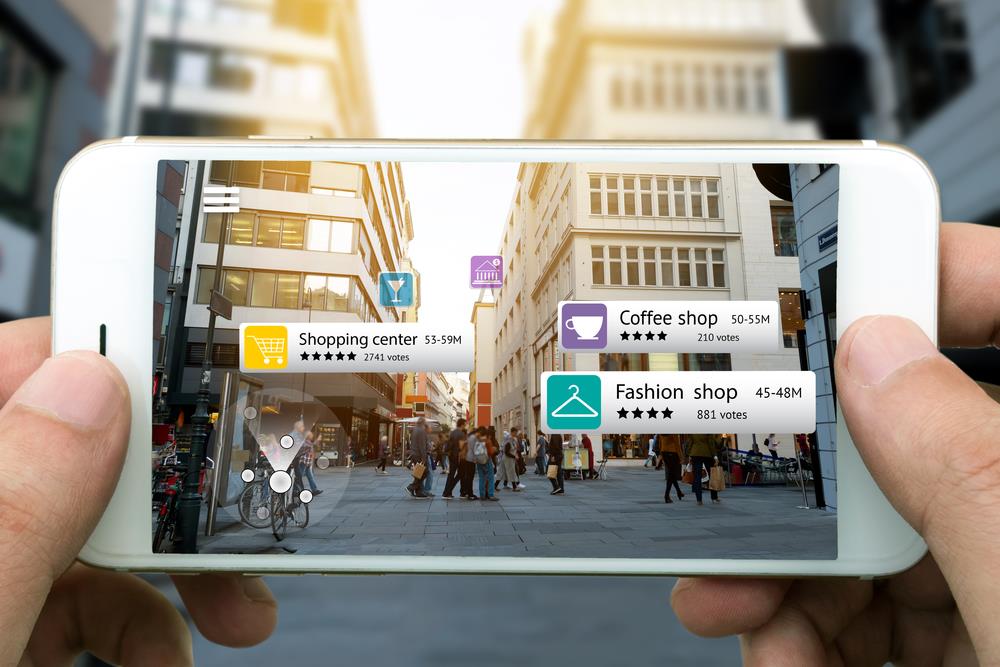[Congress Q&A] How prepared are you for another fundamental shift in how your audiences behave?
“The transition to the web and then to mobile has been harsh on publishers. The transition to Zero UI (screen-less interaction), augmented reality (AR)/virtual reality (VR), artificial intelligence (AI) and machine learning – all of those things are going to be tumultuous.” If publishers get involved now, with the right mindset, they will have a fighting chance. But even then, simple it won’t be.
We are talking to Ross Sleight (pictured), a digital media veteran who, as chief strategy officer of Somo, has advised clients ranging from Ringier Axel Springer to Audi and Shop Direct, to Adidas.
This conversation, in particular focused on the rise of visual and voice-enabled interfaces, as new starting points for engagement with the web. One message that came through time and again, no matter the technology, was the importance of the audience and diligently developing (not only protecting) the relationships with them.

Sleight will be one of FIPP’s speakers at the 41st FIPP World Congress, 9-11 October in London, where he will share further thoughts on developing digital media and technological trends and their potential impact on publishers. Below we highlight:
1. Long-form, written storytelling
2. Virtual reality
3. Visual search
4. Voice-enabled interaction
5. 3 x key take-outs for publishers
6. One final thought… Look at China
1. Are we at the end of long-form, written storytelling?
The conversation with Sleight started with the impact of Zero UI (screen-less interaction), for example voice-enabled interaction with devices such as Amazon Alexa and Google Home and how the rise of visual search, AR and VR may change the way people behave.
Sleight believes a big impact will be the disappearance of long-form text [somewhat ironic, given this piece is a long read!] as a go-to format for consumers – a speeding up of a trend rather than the start of a trend. “We have already seen it in the adoption of shorter, snack-able content online. It will accelerate in a Zero UI world.”
This does not mean the end of long-form text narratives, “but you’re working with people whose attention spans have diminished consistently, and will continue to do so.” Adding to that constant distractions from mobile phones and elsewhere, “we are undoubtedly in a byte-sized, snack-sized world.” Moreover, in environments such as messaging platforms – now far bigger than conventional social media channels – publishers are competing not only with each other, but also with brand messages and most importantly of all, peer-to-peer messages between friends. “The content produced by you and your friend is often more engaging than the content produced by anyone else (publishers included).”
This “bombardment” has implications for time available and effort required to engage. This is a world where, as the overall volume of “traffic” continues to increase, the ability to handle in-depth text content diminish. Inevitably, the unit sizes of messages have to become smaller, and will continue to do so as additional channels are added on.
“This already creates a majour challenge for publishers who want to use long-form text content to explore, analyse and go into topics in depth. Add to this world voice, camera-enabled interaction, including AR and VR, and I’m not sure if they (publishers) will be able to adapt.”
Considerations for publishers:
The main problem is the filters people build up to stop the “barrage” of content, which then has profound impact on how people consume. While longform written narratives won’t die (“It’s the natural derivative of the oral tradition, which is vital,” according to Sleight), the job for publishers will be to “either help people filter better, or to help them pay better attention”.
Sleight offers as an example books. “I speak to a lot of book publishers and I believe the days of Dickens will be back. I see a move to serialised novels, where a novel is sold on a subscription basis and you get a number of installments provided to you.”
“Scarcity” is one potential solution. “I believe that is how long form text could be sold in terms of book publishing to an attention deficient audience. It worked historically and I believe that is how it will work in a world where everything is on-demand, available to us now. On one hand there is no scarcity in this world, but on the othe everyone anticipates the launch of the new Game of Thrones. I think that scarcity, not being there for people to binge on all the time,helps to gain people’s attention. You have to put time aside for it.”
In other words, more is not necessarily better. Something magazine media publishers may better understand than most, but which may well not be enough…

2. Is Virtual Reality (VR) the long-form storytelling saviour?
VR is now reality, according to Ross. “It may take a little time for people to get headsets in the home, but the rapid move to democratisation of video to 360º is a pre-cursor of what’s to come.”
For publishers, “VR is already relevant today” and presents an interesting proposition. “VR allows providing long-form narrative content in very different and immersive ways.”
It is a world “all up for grabs” for those making the leap. However, warns Sleight, merely “porting over old mindsets onto a new media channel, one where people are also consistently distracted” will be a road to failure.
Considerations for publishers
The willingness to invest in acquisitions and/or organic experimentation in VR is crucial, says Sleight. “If you look at VR as the closest technology to long-form narrative, obviously movie studios and the entertainment world are looking hard at it. But Axel Springer has invested in Jaunt, The New York Times is putting increasing amounts of money behind this, and in the UK The Guardian is doing great work here… publishers are exploring this, trying to work out how these very immersive stories will happen.”
Others are stuck. “They are trying to protect where they are making money today, and yes, they are making money there, but they will be ill prepared for tumultuous change to come.
“I speak to lots of publishers, and my concern is they are not thinking in that way. They’re not thinking like a Google, they’re not thinking about how to disrupt themselves.”
The biggest threat to publishers is a belief they can sit back now, and “just port what they’re doing onto another medium” when the time comes. “By that time (realisation that porting does not work) the relationship with the customer will be gone.”

3. Visual search – a ‘new filter to the world’
The basic idea here is that people will be able to hold their phone cameras to an object, for it to be recognised and relevant information to be returned. “Visual search is a long-burning trend, but will be incredibly powerful.”
According to Sleight, AR – something that for example has Apple CEO Tim Cook excited – is the key technological driver behind making visual search truly work. Sleight believes Apple may launch the iPhone 8 this year with AR capabilities built into the camera and operating system – a potential game-changer.
The problem with AR now is one of ease of use. “You have to go to an app, open it… not a great customer experience. [But] once it’s built into the mobile phone camera (‘or Snap Goggles or whatever’) and operating system (rather than being a separate app), suddenly you have the whole world available to augment.
“That’s terribly exciting, because being able to point a phone at Buckingham Palace and get information about that; pointing it at someone’s car and getting information about that, shoes and getting information about that, and buying it… Suddenly the filter to our world becomes completely different.”
And that is only the start, a catalyst. “Our ability to recognise or define what an object is from a photo is developing quickly.Machine learning and deep learning, those kinds of things are pretty much what DeepMind, or Facebook or everyone are doing… trying to understand the attributes in the photo better, to be able to interpret what is in that photo and provide linkage to that. That is the next step and we’re getting to a position where this is going to be a long-term reality, maybe not this year or the next, but soon.”
As soon as these elements become part of the operating system, rather than standalone apps, “it will have a fundamental impact with how we engage with the world,” says Sleight.
Considerations for publishers
The risk for publishers is further losing “owning and engaging the customer base as consumers spend more time in channels elsewhere.” Another question is, “what’s the role for publishers in a world of AR? Do they even have a role? My concern is they certainly do not have the technology or wherewithal (to make it work).
“I mean; if you are a fashion magazine, chances are you are not spending your time today worrying about visual search. And if you have done AR, you probably said ‘let’s augment a page’.”
But that does not go deep enough, truly questioning the role of the brand in this world. For example, if “a user uses a camera to search a suit, the job of the fashion magazine should be to curate similar suits (for the user). But that’s what Google and ecommerce brands are already doing today.”
The curation element is core. “When doing a visual search, I most likely do not want to receive one article in return.” In this lies one of Sleight’ key concerns. “I am afraid publishers are getting further and further away from consumers, because they are not thinking about really solving their problems anymore,” unlike various startups out there that do.
There is some hope for the innovative, as long as they are fast. “Ecommerce businesses are good at things like recommendations, transactions, logistics and customer service elements, but have not yet fully cracked the early part of the customer journey – the why would I want the item in the first place? That’s where publishers currently sit – in the inspiration category.”
So a gap exists to tap into the trend from a position of relative strength, but it won’t be there for long. “They (publishers) can very quickly lose this opportunity because other players are eating away at it, inserting themselves between the publisher and its audience (to deliver on all elements in the customer journey, including inspiration).”
(Also read, Why Snap is calling itself a camera company? – Om Malik in The New Yorker, 13 February 2017)

4. OK Google… the rise of “voice”
According to Sleight, “voice” is the thing they spend most time on at Somo, “trying to think what the implications are. There’s part of me that says 80 per cent of the stuff you will do with voice will be automation, utility types of things – turn up the lights, what’s the weather? Voice takes out of having to bother to write or go into applications” to get something done.
He believes voice will be the primary means of input in our homes – cue developments Amazon Alexa and Google Home. “The exponential curve for quality of voice recognition has gone through the roof in the past 18 months. So the inputting device we’ve been waiting 25 years for (quality-wise) is finally here. Now the question is what about the output?”
A key to unlocking opportunities, according to Sleight, is to understand how you organise information for this world.
Considerations for publishers:
He believes “serendipity” as part of a value proposition, will “probably decrease in importance to users, due to the firehose of content available and the increased personalisation of that content to the user. It does not (even) exist in Facebook’s newsfeed anymore, we are so used to it.
That presents a problem for publishers, “because one of the big aces publishers have up their sleeves is serendipity.” But “if you are in the audio game, I think it is about how do you organise your information to be better accessed through these devices. Much in the same way Quartz for example re-invented email for readers.” This can include “organising things like audio news or telling me about Man U [Manchester United football team] in a searchable, voice-activated way.”
He also believes it will have implications for journalism as a whole. “This is the sort of same thing that happened in financial markets, when Bloomberg saw that their textual data and news wasn’t consumed as much as before. (So) they started leaving you short voicemail summaries, went into broadcasting video direct from their journalist’s desks, and so on. The point is these changes have had a radical impact on the role of their journalists, to work in keeping with what consumer habits dictate.”
On the whole, voice-activation will present “great opportunities. So, if you’re not in the audio game, my advice is to get into it, now.”

5. 3 x take-outs for publishers
Here are three actions Sleight believes publishers should consider right now.
1. You’ve got to be more radical in your re-imagining of your business. People talk about blue sky thinking, but you need a lot more blue than just that. And you need to consider many more people your competitors.
2. You need to double down on audio and video, with VR an important part of the video component. It’s the one space where I believe publishers have an absolute opportunity because they are best at telling longer-form stories.
3. All of these shifts are behavioural shifts, not just technology shifts. There’s never been a point where truly understanding your customer was more important than it is today. Getting closer to customers is what drives start-ups’ business plans. They find a problem and then they solve it. I’m not sure that many publishers today think that way. If they stop thinking about technology and start thinking about the behavioural patterns of their customers, then opportunities will beckon upon them to build great new products.”

6. And one final thought… Look at China
If publishers want to really understand what is happening in the attention economy (i.e. treating human attention as a scarce commodity), they should look at what is happening in China. “If you want to see what the way of the world is tomorrow, it’s pretty good to look at China because they have pretty much their own ecosystem.” The dominance of platforms such as WeChat shows the way. “Never mind an app, they are mobile. I think publishers should go out there to understand that.
“They should see how that has evolved into its own walled garden and understand that that is exactly what is happening with things like AI and chat bots, messaging. The more time people spend in these environments, talking to one another, they become the content themselves and the less time they will spend with publishers.”

Hear more from Ross Sleight at the 41st FIPP World Congress, 9-11 October in London. Book your place now.
More like this
How The Washington Post drives innovation
[Long read] How to get into VR and 360º videos
Quartz’s continued disruption through relentless focus on the user
[Long read] Time to rethink the (often maligned) comment section?









